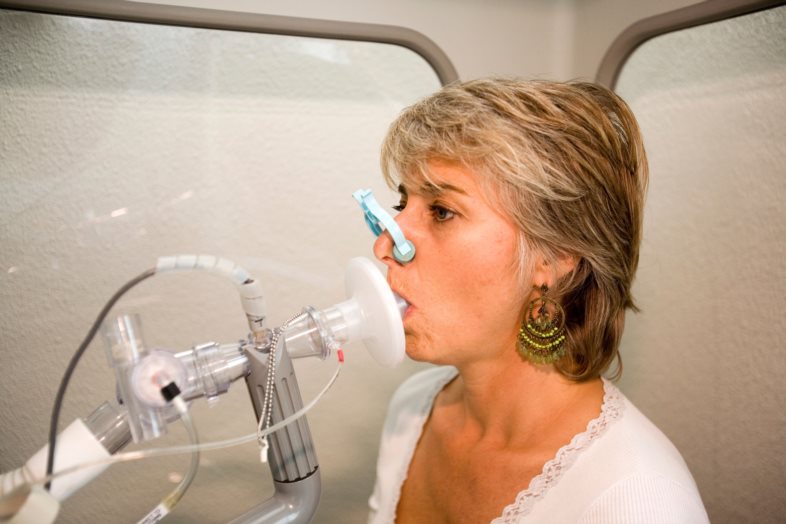To find out more about your lung health, your doctor may order lung volumes as part of your pulmonary function testing. Lung volumes testing measures eight separate volumes of air:
Total Lung Capacity (TLC) is the maximum amount of air that your lungs can hold. This is measured at the very top of an inhalation.
Vital Capacity (VC) or Slow Vital Capacity (SVC) is the maximum amount of air you can exhale during a normal or slow exhalation after you have filled your lungs.
Functional Residual Capacity (FRC) is the amount of air left in the lungs after you exhale normally.
Residual Volume (RV) is the air remaining in the lungs after you exhale as much air as possible.
Tidal Volume (VT) is the amount of air that you inhale and exhale with each normal breath. TV is the same as normal breathing when you are at rest.
Inspiratory Reserve Volume (IRV) is the greatest amount of extra air you can inhale after inhaling normally.
Inspiratory Capacity (IC) is the maximum amount of air you can inhale after exhaling a normal breath.
Expiratory Reserve Volume (ERV) is the greatest amount of extra air you can exhale after a normal exhalation.
Download Lung Volumes Testing as a PDF.
What do your lung volume test results tell us?
Obstructive lung diseases usually show:
- Increased TLC
- Increased RV
- Normal or decreased VC
Restrictive lung diseases may show decreased levels of TLC, RV, and VC.
How do we measure lung volumes?
The three most common methods for measuring lung volumes are:
- Nitrogen Washout – done by breathing in pure oxygen and measuring the amount of nitrogen in your exhaled gas.
- Helium Dilution – done by breathing a mixture of helium and oxygen.
- Body Box (plethysmography) – done by taking a series of very small panting breaths while sitting in an enclosed clear chamber. (This is the most accurate lung volume measurement technique).
For more in-depth information on this topic, please visit the Big Fat Reference Guide (BFRG). If you are enrolled in AlphaNet’s Subscriber Portal, you can access the BFRG here.
Download Lung Volumes Testing as a PDF.

